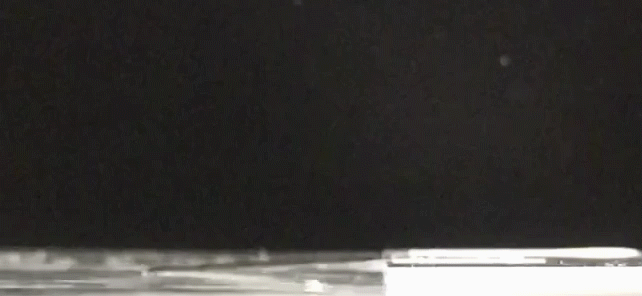
Open or close – depending on your needs: Researchers have developed a material that provides warmth when dry, but opens tiny ventilation flaps when a person sweats so that heat and moisture can escape. It is a physical effect with no additional energy requirement. The light composite material made of nylon and a wafer-thin layer of silver could thus automatically regulate the well-being of the wearer in certain areas of application. The developers say it could be used in the form of an integrated patch on certain parts of clothing.
As is well known, there is only a relatively small temperature range between a cold shower and a sweat. This becomes particularly clear when we are out and about in the cold and have to protect ourselves from cooling down with clothing: The insulating effect of ski suits and the like can quickly lead to sweaty warming, especially if you move around a lot. Because the adaptability of textiles is limited. During such activities, people therefore often wear several layers of clothing in order to be able to take something off or put on again as needed. The fact that this procedure can be annoying under certain circumstances gave the impetus for the work of the team of materials researchers from Duke University in Durham: They sound out ways of improving the adaptability of clothing items to the respective mood of the wearer.
Nylon with a touch of silver
The researchers focus on concepts that are as practicable and simple as possible, which can provide mechanical effects with a cooling effect and thermal insulation without the use of technology. In their research, the scientists first looked at a well-known material in the textile industry: light, robust and inexpensive nylon. As the researchers explain, one characteristic of this polymer material was already known that aroused their interest: When flaps are cut into nylon surfaces, they curl up a little when one side is exposed to moisture.
However, pure nylon has one aspect that is disadvantageous for the scientists’ goals: It is not particularly warming. To improve this material property, they coated the material with silver. Since they expected the metal to slow down the nylon tabs as they rolled up, they tried to make the layer as thin as possible. However, it turned out that the silver coating does not inhibit the effect – on the contrary: it causes the flaps to move more intensely. “It seems surprising and counter-intuitive, but when you add something heavy to a polymer, it can actually bend and open up more,” says co-author Cate Brinson.
The underlying effect seems plausible: As the scientists explain, the lower nylon layer tries to spread out when it gets wet – like a leaf being pulled apart. However, since it is connected to the silver layer above, the entire leaf cannot deform in this way. As the flat material expands at the bottom and not at the top, there is a strong curling effect, the researchers explain. Experiments with different silver thicknesses resulted in an optimal layer thickness in the range of 50 nanometers – 2000 times thinner than a conventional sheet of paper. Even thinner and the curling effect becomes weaker – with more silver, the weight of the metal in turn hinders the movement.
Reversible curvature with ventilation effect

The researchers then used this material to produce an experimental prototype that can be integrated into a piece of clothing. It is a patch the size of a human hand with ventilation flaps a few millimeters long. When it is dry, they are closed and form an area that can hold back heat. However, when there is moisture from the inside – such as when sweating – they open up and provide ventilation and cooling. Studies confirmed the desired effects: Compared to a conventional synthetic textile, which consists of a mixture of polyester and elastane, the material is around 16 percent more heat-insulating when the flaps are closed when dry. When the flaps are open when they are wet, however, it provides 14 percent more cooling. The developers sum up that the nylon-silver hybrid material can significantly expand the thermal comfort zone.
According to them, there is potential for application: “Areas of the body that tend to sweat could be specifically ventilated,” says senior author Po-Chun Hsu. “Our chest and back need some ventilation, but it can take a lot of effort to open those areas. A strategically positioned patch that emits heat as required could be helpful there, ”says the materials researcher. However, the concept is still in development: The team is now working on making the ventilation openings as small as possible without affecting their effectiveness and durability. Appearance also plays a role here. “I assume that if we can find the right laser cutting method to create very small flaps, we can achieve this effect,” says Hsu. “With enough work, this type of material could look very similar to what we wear today,” says Hsu.
Source: Duke University, technical article: Science Advances, doi: 10.1126 / sciadv.abj7906